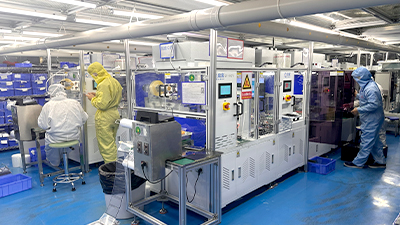
True Tone comprises a feature designed by Apple for calibrating color warmth respecting lighting. Therefore devices equipped with True Tone display authentic and precise hues independent of light circumstances. Many perceive reduced ocular strain while utilizing True Tone across long durations, as it decreases eye strain. True Tone functionality resides in products such as iPhones, iPads, and Macs and it can be enabled or disabled based on user preferences.
- Situations noticing True Tone effects cover sunlit reading, screen work in shadowy rooms, and evening movie watching.
Smart Features calibrating monitors to lighting
True Tone delivers a sophisticated solution tuning color temperature per surrounding light. It relies on sensors capturing ambient illumination and recalibrates blue light instantly for a more comfortable visual experience. It lowers visual weariness permitting sustained screen interaction. True Tone technology is incorporated in diverse devices spanning phones, tablets, and screens.
Cellular Screen opposed to iPhone Panel: Fundamental Differences
Though frequently mixed, “cellphone display” and “iPhone screen” reveal key disparities between Android and Apple displays . Android displays convey numerous alternatives for size categories and resolution measures, whereas iPhones are distinguished by Retina displays. Differences also exist in display layers. Certain Android manufacturers employ AMOLED screens while Apple uses mainly LCD and OLED panels in their iPhones.
- Disparities arise clearly concerning tone precision and sight angles
- Diverse Android editions include faster display animation speeds delivering smoothness
- Predominantly, iPhone visual units appear with greater light intensity
True Tone Features on iPhones Explained
True Tone is a technology that adjusts the color temperature of your iPhone’s display to match ambient light. It helps you view screen content comfortably across lighting conditions. When True Tone is activated, sensors in the iPhone analyze ambient light and adjust the screen’s color temperature to be soft in darkness or crisp with heavy light.
- Furthermore, True Tone enhances visual comfort by limiting eye fatigue
- Enable or disable True Tone via the Settings menu under Display and Brightness
Refined Visual Environment
Display calibration to ambient light is enhanced by True Tone. This creates a more lifelike visual experience, curbing eye stress delivering visually comfortable content access.
- Observe hues with increased clarity and precision
- Secure advanced resolution and clearer images
- Lower ocular discomfort over prolonged screen time
What makes True Tone screens valuable?
In contemporary tech scenarios, systems become highly capable. One feature gaining popularity is True Tone technology which automatically adjusts display color to ambient lighting, enhancing the visual experience to be more natural and pleasant. But is having a True Tone display really important? The answer depends on how you utilize your device and your specific needs.
- Individuals engaging in extended screen time may benefit from True Tone’s ability to lessen visual fatigue and enhance ease
- On the other hand, less frequent users mainly pursuing enjoyment might discern limited alteration
Finally, deciding on True Tone importance rests upon user demands and desires. If you prioritize a more natural and comfortable viewing experience, this feature is worth considering when selecting your next device.
Upsides and Downsides of True Tone Integration
True Tone acts as a powerful advancement tuning screen temperature consistent with ambient illumination. This can enable smoother viewing particularly across long usage intervals. However, there are some drawbacks. Some users find True Tone may be too reactive, causing unexpected changes in color temperature.
- Detailed color tasks may not perform optimally
- Varied ambient light might diminish True Tone functionality
In general, True Tone is a useful feature for those who spend much time viewing displays. Nonetheless, it is important to remain mindful of its disadvantages.
Contrasting Monitors Equipped with True Tone
True Tone technology extensively changed visual engagement with digital devices. This advanced feature automates the color temperature of your display to synchronize to surrounding light. Therefore, True Tone offers a more true-to-life viewing experience, reducing eye strain and boosting color accuracy. When examining screens with True Tone, consider factors such as pixel density to identify the best recommendation for your demands.
- Furthermore, True Tone can elevate image vividness in certain settings.
- Conversely, not all True Tone-equipped displays are identical.
Excellent iPhones with True Tone Displays
For unparalleled display comfort, choose iPhones boasting True Tone technology. True Tone adapts display hues responsive to lighting conditions, yielding enhanced viewability. Popular iPhone models with True Tone include XS Max, 11 Pro Max, 12 repuestos para celulares mini. These variants offer a diverse spectrum of features and specifications to meet your needs.
- Pricing for True Tone iPhones can be accessible
- Beyond cost, True Tone monitors promote visual comfort and health
Adjusting True Tone on Your iPhone
Tuning True Tone improves visual clarity by adapting screen warmth setup. To do this, go to "Settings" > "Display & Brightness" and switch on True Tone. In that same section, you can customize True Tone levels according to your preferences.
- Keep in mind True Tone works optimally with natural light exposure
- Explore diverse options to fine-tune your display performance
True Tone Examination: Improves Visual Quality?
Advanced True Tone mechanisms claim improved and more accurate imagery. But does it really meet these goals? To verify whether True Tone meaningfully improves the experience, we explored its function across a variety of devices and scenarios.
- This comparison shows data to identify True Tone’s value as a must-have option
Consult this analysis for insight on True Tone’s actual effect on vision!
